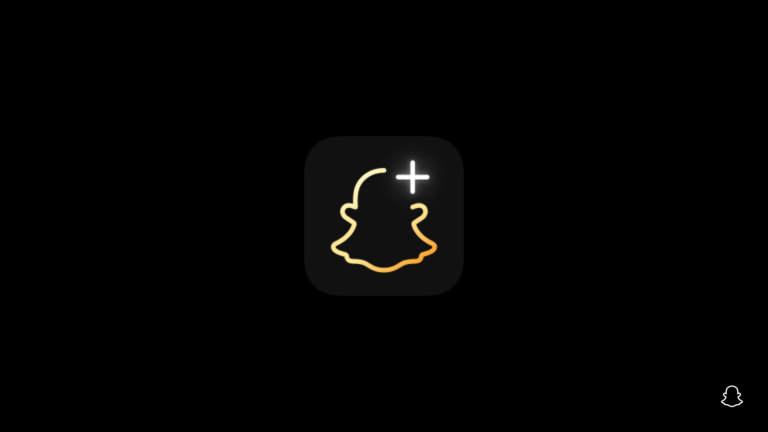
Snapchat’s Best Friends feature has been a topic of curiosity for many users. This feature highlights the people you interact with most frequently on the platform. Currently, Snapchat does not allow users to view someone else’s Best Friends list directly through the app’s interface, maintaining a level of privacy between users. This change from earlier versions of the app reflects Snapchat’s evolving approach to user privacy.
Despite official limitations, some users claim to have found workarounds or third-party methods to view others’ Best Friends lists. However, these methods are generally unreliable and may violate Snapchat’s terms of service. Additionally, using unauthorized third-party apps puts your account security at risk and could potentially lead to account suspension.
Privacy remains a core value for Snapchat, which explains why they’ve restricted access to best friends lists. While you can see your own Best Friends, the platform has deliberately made it difficult to view others’ close connections, creating a balance between social connectivity and personal privacy in the digital space.
How Snapchat Best Friends Work
Snapchat’s “Best Friends” feature is designed to reflect your most frequent interactions. These are the users you send the most snaps and chats to — and who likely return the favor. On your own profile, Snapchat shows a rotating list of up to eight Best Friends based on recent activity, ranked by interaction volume. This list updates regularly and can change in just a few days depending on how much you interact with others.
Snapchat adds visual indicators next to these friends in the form of emojis, like the 💛 (Yellow Heart), ❤️ (Red Heart), or 🔥 (Snapstreak), all based on your snap habits. But all of this is private. Only you can see who your Best Friends are. And the same goes for everyone else.
Can You See Someone Else’s Best Friends List?
No — Snapchat does not allow users to see another person’s Best Friends list. That feature was removed years ago. Back in the early days of Snapchat, users could view the top three Best Friends of others by visiting their profile. This caused a lot of drama and privacy concerns, especially in social circles where people would try to read into who was talking to who.
In 2015, Snapchat removed this visibility, shifting Best Friends to a private-only list. Since then, there’s been no official way to see someone else’s Best Friends — not even if you’re one of them. The only hint you might get is if you and someone else share a streak or mutual Best Friend emoji (like 😏, which suggests you’re on their Best Friends list, but they’re not on yours).
What About Third-Party Apps and Hacks?
You may come across apps or websites that promise to show you other people’s Best Friends on Snapchat. Avoid these completely. They’re either scams, attempts to harvest your account credentials, or tools that violate Snapchat’s terms of service. If you give your login info to a third party, you risk having your account locked, banned, or compromised.
Snapchat’s API doesn’t allow public access to that kind of friend data, and any app claiming it can bypass that is either lying or illegally scraping your data.
Can You See If You’re Someone’s Best Friend?
Kind of — but only indirectly. If you see a mutual emoji like the 😏 (Smirking Face) next to someone’s name, it means you’re on their Best Friends list but they’re not on yours. Other indicators, like a heart emoji (💛 or ❤️), suggest that you both interact a lot — enough to become each other’s Best Friend.
However, there’s no notification or setting that confirms your position on someone else’s list. If you stop snapping them for a few days, you might even fall off without realizing it.
How to Manage Your Own Best Friends List
While you can’t manually edit your Best Friends list, you can influence it by changing your behavior:
- Snap more often with the person you want as a Best Friend.
- Reduce snaps to people you no longer want on the list.
- Block and unblock someone to reset the interaction counter (not recommended unless absolutely necessary).
- Clear conversations in your chat feed, which may help slow down snap frequency records.
Keep in mind that Snapchat doesn’t let you remove someone directly from your Best Friends, but a shift in habits will naturally push them out of the ranking.
Why Snapchat Keeps This Private
Snapchat’s decision to make Best Friends private was largely based on user feedback. The old public Best Friends lists often stirred jealousy, suspicion, and a lot of over-analysis in friend groups and relationships. By keeping these lists private, Snapchat promotes more personal interaction without public judgment or pressure.
The move aligns with the platform’s broader focus on privacy, ephemerality, and reducing social comparison — a philosophy that sets it apart from networks that emphasize public engagement like Instagram or TikTok.
Final Takeaway
No — you can’t see someone else’s Best Friends list on Snapchat. That information is private, and any workaround claiming otherwise should be treated as suspicious. Snapchat deliberately designed it this way to protect user privacy and prevent the social complications that came with the original public system.
If you’re curious about your standing with someone on the app, your best bet is to look for emoji clues or — better yet — just ask them. But as it stands today, the Best Friends list is strictly a personal feature, visible only to the account owner.
Key Takeaways
- Snapchat officially prevents users from viewing other people’s Best Friends lists to protect user privacy.
- Attempting to use unauthorized methods to view Best Friends lists could compromise account security and violate terms of service.
- Users maintain control over their own privacy settings while still enjoying Snapchat’s social connectivity features.
Understanding Snapchat’s Best Friends Feature
Snapchat’s Best Friends feature creates a personalized list of users you interact with most frequently. This system uses special algorithms and displays distinct emojis to represent different relationship levels between users.
Definition of Best Friends on Snapchat
On Snapchat, “Best Friends” refers to the people you exchange snaps with most often. This feature automatically tracks your interactions and creates a personalized list of up to eight users with whom you communicate most frequently.
Unlike some social media platforms, Snapchat’s Best Friends list is largely private. According to Snapchat’s help center, only you can see your complete Best Friends list. Other users cannot view who appears on your list.
The Best Friends feature uses special emojis next to names to indicate different relationship statuses. For example, a yellow heart might appear next to someone you’ve been mutual best friends with for two weeks.
How Snapchat Determines Best Friends
Snapchat uses an algorithm that tracks the frequency and recency of your interactions with other users. The platform considers both snaps and chats when calculating your Best Friends.
The algorithm weighs recent activity more heavily than past interactions. Sending and receiving snaps both count toward determining Best Friend status, but sending snaps typically carries more weight in the algorithm.
Snapchat refreshes this list regularly based on your current communication patterns. If you stop chatting with someone frequently, they will eventually drop off your Best Friends list.
Despite claims made on some platforms, Snapchat has confirmed that other users cannot view your Best Friends list through external websites or other methods.
Privacy Settings and User Control
Snapchat offers users extensive control over their privacy through customizable settings. These options allow users to manage who sees their content and how their information is displayed to others, particularly regarding the Best Friends feature.
Customizing Your Best Friends List
Snapchat doesn’t allow users to manually select who appears on their Best Friends list. This list is automatically generated based on interaction frequency. However, users can influence who appears by controlling their communication patterns.
To affect who appears on the list:
- Interact more with the people you want as Best Friends
- Block users you don’t want appearing on your list
- Adjust chat settings to prioritize certain conversations
Users should understand that Best Friends lists are private and only visible to the account owner. This privacy measure was implemented after earlier versions of Snapchat made these lists public.
The app also offers the “Hide My Best Friends” setting, which removes this information entirely from your profile.
Controlling Who Sees Your Stories
Story privacy settings are crucial for protecting your content on Snapchat. Users can select who views their stories through several options.
The main privacy options for Stories include:
- Everyone: Visible to all Snapchat users
- Friends Only: Limited to added connections
- Custom: Select specific friends who can view
By default, only Friends can view your Story, but this can be changed. To adjust these settings, users should tap their profile icon, access Settings, and select “Privacy Controls.”
For additional privacy, users can create private stories for smaller audiences or use the “My Eyes Only” feature to keep certain snaps completely private.
Privacy Policy Insights
Snapchat’s privacy policy outlines how the platform manages user data and friend connections. The policy specifically addresses how friend relationships are processed and displayed.
Key privacy policy points regarding Best Friends:
- Data collection: Snapchat tracks interaction frequency to determine Best Friends
- Visibility limitations: Others cannot see your complete friend list
- Family Centre exceptions: Parents using Family Centre may have additional visibility options
Snapchat continuously updates its privacy features based on user feedback. The platform has moved toward increasing privacy over time, giving users more control over their information.
Users should periodically review app permissions and privacy settings to ensure they match personal comfort levels with data sharing.
The Social Aspect of Snapchat
Snapchat has evolved from a simple photo-sharing app to a complex social platform that shapes how people connect and communicate. The platform’s unique features create specific social dynamics that impact friendships and daily interactions.
The Role of Stories in Snapchat Friendships
Stories on Snapchat provide a casual way for users to share moments from their day. Unlike permanent social media posts, these 24-hour updates offer glimpses into friends’ lives without the pressure of perfection.
Users can see who views their Stories, which creates an unspoken social awareness. Knowing who consistently watches your content can hint at closer friendships, even when direct messaging isn’t frequent.
The app uses special friendship emojis to indicate relationship status. These symbols appear automatically based on interaction patterns and can reveal connection strength without explicitly showing a “best friends” list to others.
Stories also facilitate group bonding through shared experiences. Friends can react to Stories with quick messages or emojis, creating low-pressure conversation starters that maintain connections.
Snapchat as a Messaging App
Snapchat’s messaging system differs from traditional texting with its emphasis on visual communication. The disappearing nature of messages creates a more spontaneous and authentic conversation style.
The camera-first approach encourages users to share real-time visuals rather than just text. This visual priority helps maintain a sense of presence despite physical distance between friends.
Users can enhance their messages with stickers, Bitmojis, and filters. These playful elements add personality to conversations and create shared inside jokes between friends.
Privacy features like screenshot notifications and disappearing messages shape how users interact. This creates a unique social etiquette where certain types of content are considered appropriate for different relationships.
The app’s “Snap Streaks” feature, which tracks consecutive days of sending Snaps, creates a gamified element to maintaining friendships that many users take seriously.
Interactive Features and User Engagement
Snapchat’s popularity stems largely from its interactive elements that keep users coming back daily. These features not only enhance communication but also create deeper connections between friends through personalized content.
Use of Filters and Bitmoji
Snapchat’s filters have revolutionized how users interact with the platform. These augmented reality overlays transform ordinary snaps into creative expressions that reflect users’ personalities and moods.
Bitmoji integration takes personalization further by allowing users to create cartoon avatars that resemble themselves. These digital mini-mes appear in chats, on the Snap Map, and can be included in various stickers.
Many users incorporate filters and Bitmoji when communicating with their best friends, creating inside jokes and shared experiences. The frequency of these personalized interactions often contributes to someone becoming a “best friend” in the app’s algorithm.
Daily use of the camera feature with these enhancements strengthens bonds between users who may develop specific communication patterns with their closest contacts.
The Significance of Stickers and Emojis
Stickers and emojis serve as visual shorthand in Snapchat conversations, adding emotional context that text alone cannot convey. These elements appear prominently in exchanges between best friends on the platform.
Snapchat’s friendship emoji system subtly indicates relationship status between users:
- 😊 Smiling face: Someone is one of your best friends
- ❤️ Red heart: You’ve been #1 best friends for two weeks
- 💛 Yellow heart: You are #1 best friends
- 🔥 Fire: You’re on a Snapstreak
These indicators provide insight into friendship dynamics without explicitly revealing someone’s entire best friend list. Users often check these emojis to gauge relationship strength.
Custom sticker creation allows for personalized messaging that deepens connections between frequent snappers. The more users exchange these enhanced messages, the more likely they are to appear in each other’s friend algorithm calculations.
Snapchat’s Functionality and Safety
Snapchat offers several features designed to enhance user experience while providing tools to maintain privacy and security. Understanding these features can help users enjoy the platform safely without compromising personal information.
Understanding Snap Map and Ghost Mode
Snap Map lets users share their location with friends on a map interface. This feature works by using your phone’s GPS capabilities. When enabled, friends can see your exact location whenever you open the app.
For those concerned about privacy, Ghost Mode provides an important safety option. When activated, this setting prevents anyone from seeing your location on Snap Map.
Users can enable Ghost Mode by:
- Opening Snap Map
- Tapping the settings icon
- Selecting “Ghost Mode”
Ghost Mode can be set for 3 hours, 24 hours, or indefinitely. This gives users flexibility in controlling when their location is visible to others.
Parents should ensure younger users understand these location-sharing capabilities and encourage using Ghost Mode when appropriate.
Safety Measures and Two-Factor Authentication
Snapchat incorporates several security features to protect user accounts and personal information. Two-factor authentication (2FA) provides an essential layer of protection by requiring both a password and a verification code sent to the user’s phone.
To enable 2FA:
- Go to Settings
- Select “Two-Factor Authentication”
- Choose either SMS verification or an authentication app
Beyond 2FA, Snapchat offers additional safety measures:
- Private Stories – Share content with a limited group
- Friend Request Settings – Control who can add you as a friend
- Blocked Users List – Prevent unwanted interactions
Users should regularly review their privacy settings to ensure they align with their comfort level. These settings can be found in the app’s Privacy Control center.
The platform also provides resources for reporting inappropriate content and blocking users who violate community guidelines.
Managing Content and Notifications
Snapchat offers several options to control what content you see and how others interact with your snaps. These settings help users maintain privacy while navigating notification preferences and content limitations.
Setting Time Limits and Ad Preferences
Snapchat allows users to manage how much time they spend on the app and what type of ads they see. Users can set daily time limits by going to Settings > App Timer, where they can choose how long they want to use the app each day.
When the time limit is reached, Snapchat will send a notification. This feature helps prevent excessive screen time and promotes healthier app usage habits.
For ad preferences, users can navigate to Settings > Ads and adjust what types of advertisements appear. They can opt out of interest-based ads or activity-based information collection.
Snapchat also offers options to customize ad experiences based on personal interests. These settings don’t completely remove ads but make them more relevant to the user’s preferences.
Taking Screenshots and Notifications
Snapchat notifies users when someone takes a screenshot of their content. This feature serves as a privacy protection mechanism that cannot be disabled.
When a user captures a screenshot of a snap, the sender receives an immediate notification. This applies to:
- Private snaps
- Chat messages
- Stories
- Memories shared with others
It’s important to note that attempting to screenshot someone’s content secretly without them knowing isn’t possible through normal means. Third-party apps claiming to bypass this notification system often violate Snapchat’s terms of service.
For media management, users can save photos and videos to their Memories section rather than taking screenshots. This allows for personal content preservation without notifying the original sender, though it only works for content the user has permission to save.
Marketing and Commercial Use
Snapchat has evolved into a powerful platform for businesses looking to reach younger demographics. The app offers unique marketing opportunities through its various features that blend advertising with the social experience.
Snapchat for Business and Marketing
Businesses can leverage Snapchat’s marketing tools to connect with over 750 million monthly active users. The platform offers several advertising formats including Snap Ads, which are full-screen vertical videos that appear between Stories.
Brands can create custom Snapcodes that users scan to unlock special content or follow the brand. This creates an interactive experience that feels more engaging than traditional advertising.
Companies can also utilize augmented reality (AR) lenses and filters for brand promotion. These branded filters allow users to interact with products virtually before purchasing.
The platform’s analytics tools help marketers track campaign performance, including views, engagement rates, and demographic data. This information helps businesses refine their strategies for better results.
Discover Feature for Brands
Snapchat’s Discover feature provides a dedicated space where brands and publishers can share professional content. This section appears separately from personal Stories, giving businesses premium visibility.
Content on Discover is typically curated by media partners like ESPN, National Geographic, and Vice. These publishers create exclusive content formatted specifically for Snapchat’s vertical, mobile-first interface.
Discover offers brands an opportunity to reach Snapchat’s predominantly young audience through sponsored content that feels native to the platform. This integration helps advertisements feel less intrusive.
Recent Snapchat updates have enhanced the Discover section with more intuitive navigation and improved recommendation algorithms. These changes help connect users with brand content that matches their interests.
For businesses targeting Gen Z and younger millennials, Discover represents one of the most effective digital marketing channels available today.
Technical Aspects of Snapchat
Snapchat’s technical framework constantly evolves to balance user privacy with social connectivity features. The platform employs sophisticated algorithms to track user interactions while maintaining certain privacy barriers around personal data.
Understanding Snapchat Scores
Snapchat scores represent one of the app’s most enigmatic features. These scores increase based on a user’s activity, primarily when sending and receiving snaps. Each sent or received snap typically adds one point to a user’s score.
The exact algorithm behind Snapchat scores remains partially hidden. However, we know that text messages don’t affect scores, while snap streaks contribute significantly. Users can view their own scores easily by checking their profile page.
These scores serve as engagement metrics that Snapchat uses to analyze user behavior. High scores often indicate active, long-term users who frequently interact with friends through the platform’s primary feature – ephemeral photo and video sharing.
Interestingly, Snapchat doesn’t provide tools to view other users’ best friends like it once did. This change occurred through previous updates as Snapchat prioritized user privacy.
The Evolution of Snapchat Updates
Snapchat’s update history reflects its journey from a simple photo-sharing app to a complex social media platform. Early updates focused on core functionality improvements, while recent ones emphasize augmented reality and content discovery.
The controversial 2018 redesign marked a turning point in Snapchat’s development philosophy. This update separated friend content from publisher content, initially receiving significant backlash from users.
Security enhancements have been central to many updates. Snapchat has consistently worked to protect user data and privacy features, including removing public access to best friends lists that was once possible.
Recent technical updates have introduced machine learning algorithms that personalize content discovery. The app now uses AI to suggest friends, content, and even filters based on user behavior patterns.
Snapchat typically releases major updates quarterly, with minor bug fixes and security patches deployed more frequently. These continuous improvements help maintain the platform’s relevance in the competitive social media landscape.
Extending Snapchat’s Capabilities
Snapchat offers several ways to enhance your social experience beyond the basic app functionality. These extensions allow for more creative content sharing and cross-platform integration.
Utilizing Snapchat Spectacles
Snapchat Spectacles are wearable cameras that connect directly to your Snapchat account. These smart glasses let users capture moments hands-free from a first-person perspective.
The latest generation of Spectacles supports augmented reality, allowing wearers to overlay digital effects onto the real world. This creates unique content that standard smartphone cameras cannot capture.
Users can record 10-second video clips with a simple tap on the frame. These videos automatically sync to the Snapchat app when connected to Wi-Fi.
Spectacles create circular videos that provide a more immersive viewing experience when watching content on mobile devices. This format better mimics how humans naturally see the world.
Connecting with Other Social Media Apps
Snapchat integrates with various social media platforms to expand its reach. Users can share their Snapchat stories directly to Instagram, Twitter, and Facebook with just a few taps.
The platform’s Snap Kit allows third-party developers to incorporate Snapchat features into their own apps. This means users can utilize Snapchat’s camera and AR effects in other applications.
Bitmoji integration lets users create personalized avatars that work across multiple platforms. These avatars appear in chats, games, and even keyboard apps on different devices.
Cross-platform sharing helps users maintain their social presence without having to recreate content for each app. This saves time while reaching a wider audience across different social networks.
Frequently Asked Questions
Snapchat users often have questions about viewing friends lists and accessing best friends information on the platform. Privacy features and limitations play a key role in what can and cannot be seen on other accounts.
Is there a way to view someone else’s Snapchat friends list?
Currently, Snapchat does not allow users to view someone else’s complete friends list. This is a privacy feature built into the platform.
Only you can see your own best friends list, which is determined by how frequently you interact with certain contacts. According to Snapchat’s help documentation, even My AI might appear on your best friends list if you chat with it frequently.
Are there any third-party tools that allow you to check someone’s friends on Snapchat?
Third-party apps or tools claiming to reveal others’ Snapchat friends lists should be avoided. These applications often violate Snapchat’s terms of service and can compromise account security.
Using such tools may lead to your account being temporarily or permanently banned. They typically request login credentials, which puts your personal information at risk.
Does Snapchat Plus offer features to see other users’ best friends lists?
Snapchat Plus (Snapchat+) is a premium subscription service that offers additional features, but viewing other users’ best friends lists is not one of them.
The subscription provides benefits like custom app icons and seeing who rewatched your stories. However, it maintains the platform’s privacy standards regarding friends lists.
What are the steps to find out your rank on another user’s best friends list without a premium account?
There is no legitimate way to determine your rank on someone else’s best friends list. This information is private and not accessible to other users.
In the past, Snapchat briefly allowed users to see others’ best friends, but this feature was removed to enhance privacy. Now, only you can see who your own best friends are.
Are there legitimate methods to identify best friends on Snapchat through an iPhone?
There are no legitimate methods to identify someone else’s best friends on Snapchat, regardless of whether you’re using an iPhone or any other device.
Snapchat has intentionally designed the platform to keep this information private. As Beebom confirms, Snapchat doesn’t allow viewing the best friends list of other users, even if they’re your friends.
What advice do Redditors give for viewing someone’s Snapchat friendships?
Reddit discussions generally acknowledge that viewing someone else’s complete friends list or best friends on Snapchat isn’t possible through the app’s legitimate features.
Many Redditors advise against using third-party apps or websites claiming to offer this capability. According to Quora responses, the only way to see someone’s friends would be to physically access their phone and look through their account directly.




